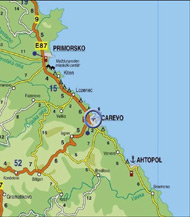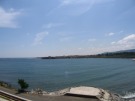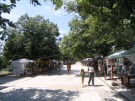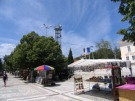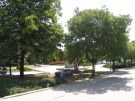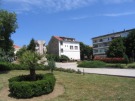Carevo
Area Description
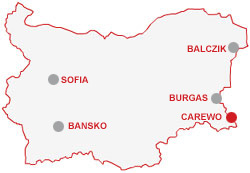 |
Karevo is 60 km from Bourgas. It is a small, peaceful and clean town located on a small peninsula. The sea water is considered the purest in the Bulgarian coast. Karevo has a small beach and a harbor at the Atliman Bay [the Horse Bay]. The legend says that when the fortress in Bourgas was taken over by the Turks in the 5th century, a beautiful girl was captured and the sultan fell in love with her. She agreed to become his wife provided that he left some parts of the Bulgarian territory free and independent so that she could ride there on a horse in just one day. She managed to get out of Bourgas and reach the bay of today’s Karevo, where the worn out horse died. That is why the bay is called the Horse Bay.
Karevo was called Michurin until 1990. The first traces of settlement in this area date back to ancient Greece. Back then there was a fishing colony and settlement. The medieval settlement [the 15th century] was called Vasiliko. That is the name of one of Karevo’s district. The town was seriously destroyed in a fire of 1880.
Karevo remained under Turkish rule until the First Balkan War [1912]. It was a poor and underdeveloped town. Malaria was a great problem – the authorities considered a resettlement of the population and destruction of Karevo. Tourism, fishery and agriculture are the main income sources of the population of Karevo nowadays [the location and mild climate are favorable to growing citrus fruits].
The archeologists found remains of a medieval settlement [in the area of Vasiliko district] in Karevo. The remains of a small fortress on the Kastro cliff, which was probably the seat of pirates, was also discovered. The Trinity Orthodox church [called "Св. Успение Богородично" – the Putting to Sleep of Our Lady] is a place worth seeing. It was built in 1810 on foundations of an older church. It was developed in 1831 and 1895. Icons, which are to be found in the church, testify to the fact that there were more old churches in Karevo. A part of them comes from the end of the 18th century. They were drawn by Joan Zograf [1797-1805], Dimitar Zograf (1835), Todor Zograf (1850). Some of these icons were corrected by Poliksoidu Zograf. The icon of St Nicholas from 1805 was particularly worshiped. St Nicholas is a patron of sailors and fishermen in Bulgaria.
more »





